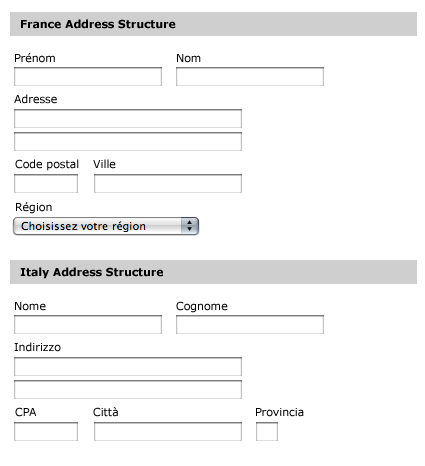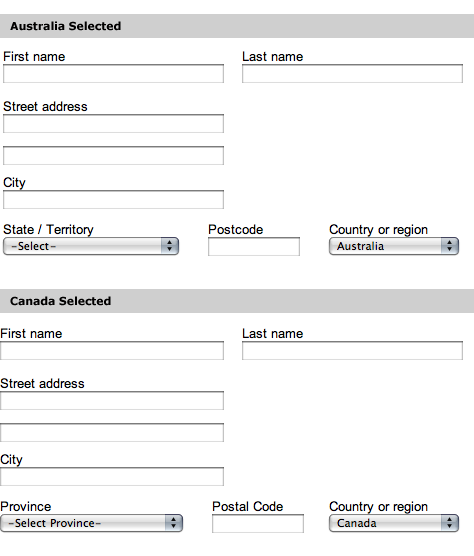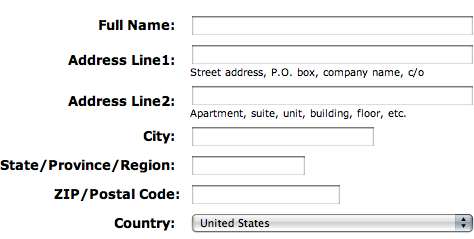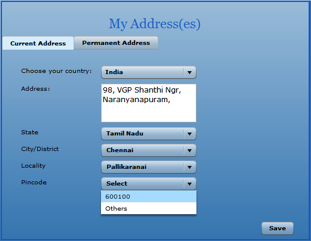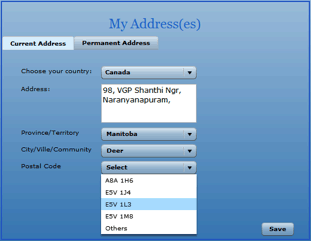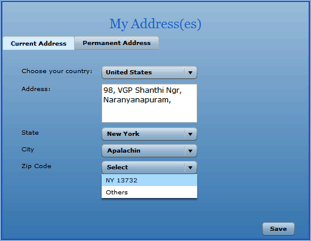This is an important point to consider when laying out the input fields that make up an address. Figure 1 shows how to lay out the fields commonly included in an address in the United States. The alternative, a divided address structure in which each field appears on a separate line as shown in Figure 2, doesn’t offer the benefit of being understood as a set of related input fields. So people are more likely to consider each input field in relative isolation instead of looking at the address as a whole.
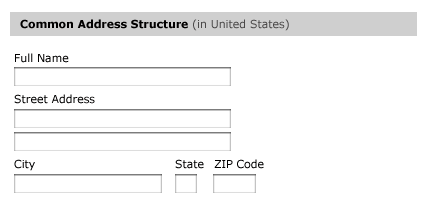
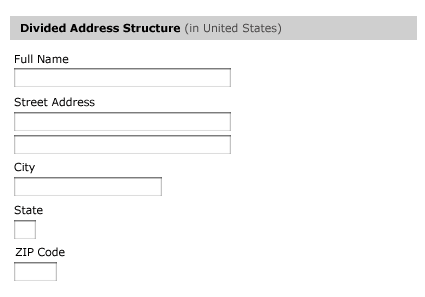
Luckily there is a fair amount of commonality between the elements that make up an address across the world. In most countries, the destination, or recipient, in an address structure progresses from most to least specific—Russia and Iran are notable exceptions. So when shipping to an individual at a corporation, the individual’s name would come first, then the corporation second. Following the destination is street address, city line, and lastly, the country line, as illustrated in Figure 3. This line structure is a pretty reliable baseline for all international addresses.
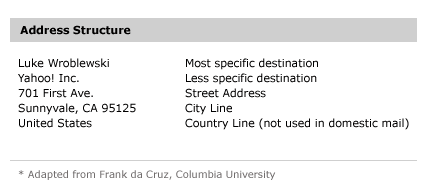
International Variations
International variations in address fields start with the most specific destination—the person to whom an address belongs. Individuals across the world might have one name, two names, three names, or more. A Formulate Information Design article, “The Name Riddle,”![]() gives a great overview of the possible variations—from Sukarno, Indonesia’s first president, to Fahad bin Abdul Aziz bin Abdul Rahman Al-Sa'ud, the fifth king of Saudi Arabia.
gives a great overview of the possible variations—from Sukarno, Indonesia’s first president, to Fahad bin Abdul Aziz bin Abdul Rahman Al-Sa'ud, the fifth king of Saudi Arabia.
Street addresses can also vary quite radically, even within a single country. The United States Postal Service’s Postal Addressing StandardsPDF![]() outline variations in the United States—from 1401 Main St to RR 9 Box 23A to 475 Lanfant PLz SW, Rm 10022.
outline variations in the United States—from 1401 Main St to RR 9 Box 23A to 475 Lanfant PLz SW, Rm 10022.
Though names and street addresses can have many variations, a single input field for each of them that provides an adequate amount of room for longer answers is usually all that’s necessary. Street number comes before street name? No problem. Street number comes after street name? Also, no problem. When it comes to the city line of an address block, however, we’re not as lucky.
In addition to a city name and postal code, the city line can also include a state, region, province, or county. Depending on the country, each of these can have different names, abbreviations, and locations in the address block. There is also a slew of postal code format variations across countries, including the use of spaces, numeric or alphabetic characters, and various lengths. The order of these elements also varies quite drastically. Figure 4 shows a few of the possible variations in the city line of an address block.
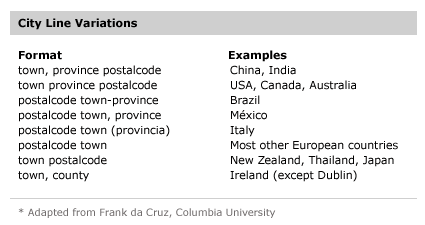
To account for these international variations, Web form designers have taken a number of approaches: specific formats, changing formats, and generic formats.

